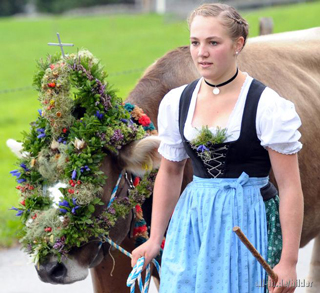- Someone else has looked at Food Insecurity in the World 2011 … so we don’t have to.
- That Kenyan meeting on Knowledge exploration agricultural biodiversity, resilience and transformation starts this week.
- 17th meeting of the Assembly of European National Coordinators for Animal Genetic Resources. 17th? Wow.
How to implement the Global Plan of Action for Animal Genetic Resources
A very useful message on DAD-Net brings us all up to date “on progress in the development of the set of guidelines that FAO is developing to support policy-makers and technical experts in the implementation of the Global Plan of Action for Animal Genetic Resources…” Here’s the state of play:
- Preparation of national strategies and action plans for animal genetic resources in English/French/Russian/Spanish
- Breeding strategies for sustainable management of animal genetic resources in English/French/Spanish
- Developing the institutional framework for the management of animal genetic resources in English
- Surveying and monitoring of animal genetic resources in English
- Draft guidelines on phenotypic characterization of animal genetic resources
- Draft guidelines on molecular genetic characterization of animal genetic resources
- Draft guidelines on the cryoconservation of animal genetic resources
Two observations. The first is that I wish we plant people were so organized. And the second is that surely a place could be found on the FAO or DAD-IS website for such a list.
Nibbles: Cow beauties, Ethnopharmacology etc
- UK High Comissioner in Namibia visits big agricultural show, discovers “hundreds of words [for] the markings on a cow“.
- CTA Wageningen has a (new?) dossier on Ethnopharmacology, food production, nutrition and biodiversity conservation: Towards a sustainable future for indigenous peoples.
Now that’s what I call a celebration of biodiversity

What goes up, must come down. Alpine farmers who take their livestock to higher pastures in the spring bring them down for the winter. The Human Flower Project shares the celebratory mood.
Brainfood: Breeding resistance, Pastures, Wheats, Dates, Conservation, Habitats, Old olives, Spinach selection, Maize breeding
- Cytological and Molecular Characterization of Homoeologous Group-1 Chromosomes in Hybrid Derivatives of a Durum Disomic Alien Addition Line. Getting tolerance to Fusarium head blight into durum wheat ain’t easy.
- Sustainable, low-input, warm-season, grass–legume grassland mixtures: mission (nearly) impossible? Apparently really difficult to find native North America legume forage species tolerant of both freezing and high temperatures, but people are looking. Gotta wonder if it’s a problem elsewhere too. Ethiopian highlands?
- Diversity of different farmer and modern wheat varieties cultivated in contrasting organic farming conditions in western Europe and implications for European seed and variety legislation. Strong selection for uniformity (for regulation) is not reflected in uniformity assessed on farm. And farmer varieties were good outside their region of origin.
- Glycaemic index of three Indian rice varieties. All three the same, high, GI. So, “There is an urgent need to study the GI of other commonly consumed rice varieties and to develop rice of a lower GI value”. Er, right.
- Glycemic indices of five varieties of dates in healthy and diabetic subjects. All five the same, low, GI and no difference in diabetics.
- Agricultural expansion and the fate of global conservation priorities. Conservation needs to think about agriculture.
- Which habitats of European importance depend on agricultural practices? 63 of them, mainly through grazing and mowing.
- Centennial olive trees as a reservoir of genetic diversity. Only about 10% of old trees matched current cultivars.
- Phenotypic Changes in Different Spinach Varieties Grown and Selected under Organic Conditions. There were phenotypic changes after just three seasons of selection, in one case resulting in a “new” variety.
- Open-Pollinated vs. Hybrid Maize Cultivars. Hybrids are not the only way to improve maize productivity, apparently.
- Plant breeding for harmony between agriculture and the environment. “Plant breeding can be a powerful tool to bring “harmony” between agriculture and the environment, but partnerships between plant breeders, ecologists, urban planners, and policy makers are needed to make this a reality.” I was just going to ask, why can’t we all just get along.
Don’t forget the open Mendeley group for the papers we link to here. Even if you don’t use Mendeley, you can subscribe to the RSS feed from the group and get stuff that way.